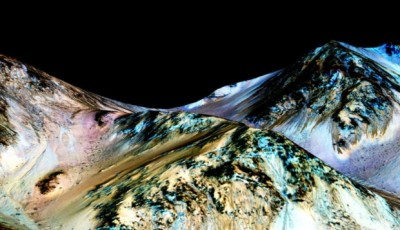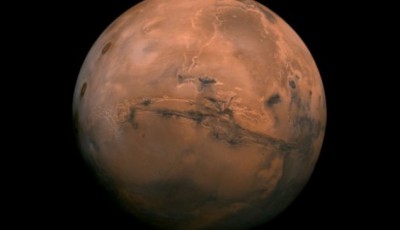Water on Mars: What we know after NASA announcement
Watch the highlight video of NASA’s Water on Mars discovery announcement below.
Scientists say the moving salty water is the cause for seasonal dark streaks they had observed on the planet, and its presence could impact future exploration.
NASA researchers did say that now that it knows what it is looking for it could direct instruments on other Mars landers or orbiters to try and look further at the dark streaks.
“Today, we’re revolutionizing our understanding of this planet”, said Jim Green, director of planetary science at NASA headquarters in Washington, D.C. “Our rovers are finding that there’s a lot more humidity in the air than we ever imagined”.
McEwen and team noticed the water in 2011 in the form of dark streaks running down the slopes of craters, canyons and mountains on Mars’s surface. Scientists and researchers have yearned for years to get proof of water on Mars, because it’s a planet that should technically be able to sustain human life at some point in the future.
“They appear in several locations on Mars when temperatures are above minus 10 degrees Fahrenheit (minus 23 Celsius), and disappear at colder times”, NASA said.
Hydrated salts precipitate from liquid water, so detecting them is a big deal.
The study, which was published on Monday in Nature Geosciences journal, is based on data collected by National Aeronautics and Space Administration (NASA)’s Mars Reconnaissance Orbiter (MRO).
Whatever the water’s source, the prospect of liquid water, even seasonally, raises the intriguing prospect that Mars, which is presumed to be a cold and dead planet, could support life today. Scientists have theorized that more than 4 billion years ago, the Red Planet had enough water to fill lakes and rivers, though today’s findings show the most direct evidence of the water.
Now, scientists are seeking to find where the water comes from.
The discovery “confirms that water is playing a role in these features”, said Alfred McEwen, a planetary scientist with the University of Arizona.
“Liquid water is a key requirement for life on Earth”, study lead author Lujendra Ojha, of the Georgia Institute of Technology in Atlanta, told Space.com via email.
If you’re interested in seeing more awesome Mars images, head on over to the HiRISE website. “But something has happened to Mars”.












